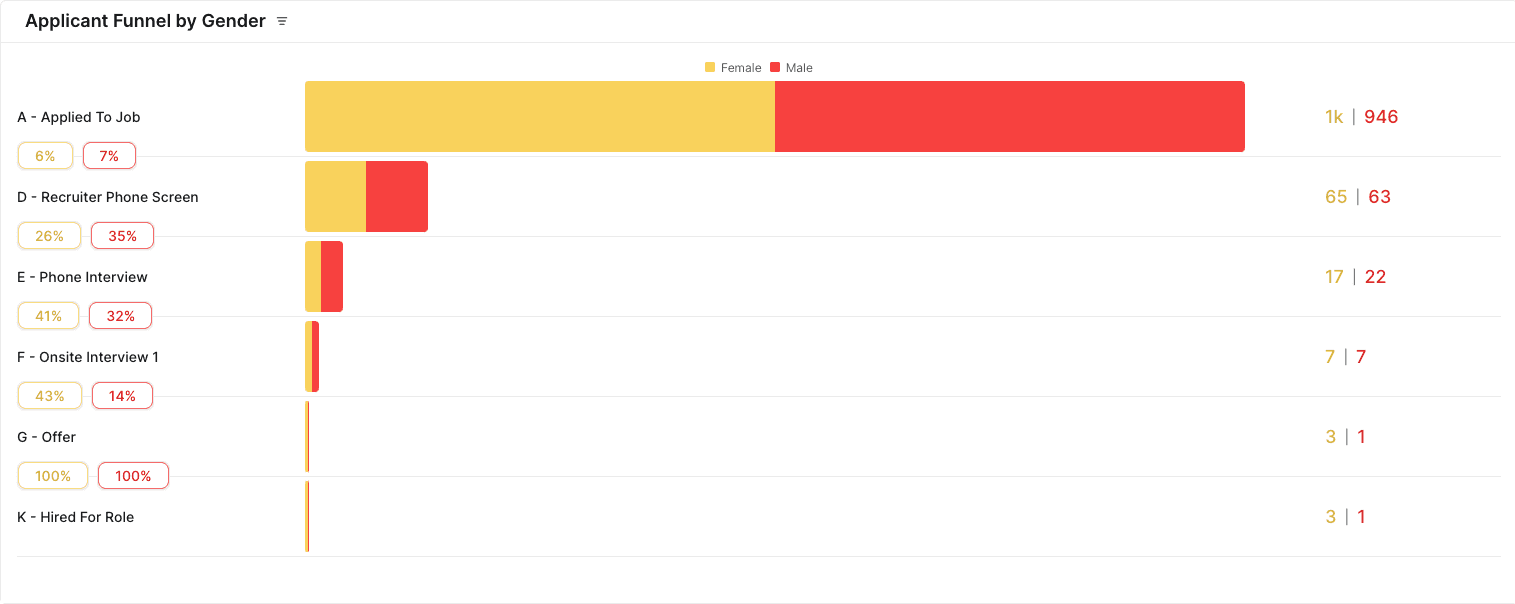HR Analytics
July 18, 2022
Visual Alchemy in HR Analytics: How to Present HR Data
If you’re a data person, you’ve probably seen this. And you probably thought, “hey – why didn’t I think of that?!”
It sums up the struggle perfectly, particularly for people who work in HR analytics.
Getting the data and cleaning it are only half the battle – less than half, even. The real challenge, after sorting, compiling and making some sort of sense out of it, is how to make the data tell a story.
Why is storytelling even important in data? It’s not like you’re writing a novel.
Well, no – but go back to that tweet for a second. That’s a story, told visually. While it doesn’t use data, it's about data. And you got it, instantly. In fact, anyone who sees it will get it instantly. But it’s more important that you got it – because you’re the target audience.
At some point, you’re going to have to convince others to act on your data. To do that in a compelling way, you’ve got to deliver your data quickly, clearly and in a format that everyone can understand; especially your leadership.
Visual alchemy, the art and science of presenting data visually, is how you can tell a story with complex data in the simplest possible terms – and look great doing it.
Deciphering complex data in simple terms
Take a look at this.
It takes a simple statistic – the odds of being in a deadly plane crash (11,000,000 to one, just so you know) and builds it into a totally data-driven story.
With little more than simple shapes, colors and the bare minimum text, it paints a vivid picture. It gets the point across in a way that anyone can understand. Most importantly, it speaks directly to frequent and nervous flyers – the target audience that it wants to educate.
Or how about something a little closer to home? Check out this interactive graphic that visualizes diversity in tech companies. It’s a few years out of date – but wow; it’s powerful stuff, even if you only spend 30 seconds playing with it.
These are complex issues, with vast wells of data behind them – presented in crystal-clear, easy to understand visuals.
Hopefully, you can see where we’re going with this: your HR data can do this, too. HR analytics is complex by nature, and getting useful information from it takes skill. And a little creativity.
Don’t let anyone tell you that HR analytics isn’t creative ever again!
Employee analysis: what do leaders need to know?
Here’s what you need to know first: when it comes to presenting, insights beat data.
Insights lead to decision-making. Data leads to insight, but it requires interpretation – translation, if you will – into something immediately understandable.
You understand your data, because you know it. You’ve cleaned, optimized and sorted it. But from an outsider looking in – especially one with little time on their hands – it’s going to look just as disordered as the raw data you started with (even if you’ve color-coded it).
If leadership has ever asked you “what am I looking at?”, then your presentation is probably missing the main ingredient: clarity of insight.
Leaders need to know top-level, broad trends first. They need the factors that will influence their decision – not the whole dataset.
Before you design a visual presentation of your data, find out what your leaders want to see and what they want to know from HR analytics data.
And just ask them what they want; they’d rather spend a minute responding than a whole presentation trying to unpick the data themselves.
How to present the data visually
Our examples above are big and clever. They’re made to be pretty, rather than functional. But there’s got to be a balance between that creative flair (to retain interest and capture attention), and useful insight.
Whatever you do, it has to be crystal-clear, so that leaders can effectively make decisions in less time.
And when you think about it, you don’t want to get lost in HR dashboards any more than your CEO does. Imagine getting the insights you need without having to dive in and trawl through all of your HR data. eqtble’s visualizations do this automatically – delivering the insight to you, so you can present in ways you know will work best.

A lot of HR analytics and HR data platforms fall short here. If it’s not death by dashboards, it’s too messy or convoluted to get anything useful out of without an expert on hand.
eqtble boils complex data down into simple decision-making points, and can steer users towards pre-defined goals with AI-powered insight. It’s top-line data and graphs with immediate context.
Once you’ve got those insights, you’ve got the story you want to tell. That’s the key ingredient – the most crucial point you want to convey.
Maybe it’s a need for additional hiring budget, or a gap in skills and resources, or a common theme that’s emerging from engagement surveys that you want to address; whatever it is, come armed with a solution. Use the insight that your data gives you.
If your data’s sound, and your insights check out, a clear (and beautiful, if you like!) visual presentation will command attention where it’s needed – and get the data into minds far more effectively than numbers can.
Still looking for some inspiration? Okay – here’s one more: a visualization about how to make a good visualization.
Show, don’t tell – make HR analytics visual, with eqtble
Get valuable insights at the click of a button. Present leaders with solutions that they can act on, instantly. Use eqtble to unlock the power of HR analytics.
Want to know more? Click here to request access.







